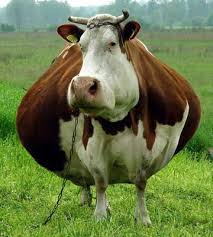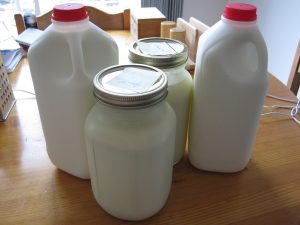Thursday, March 29, 2012
Wednesday, March 28, 2012
 Going out on a limb, take a chance, make a choice, change...and other sayings, as seen to above is all about leaving your comfort zone to experience something new and exciting. Life is about change so you might as well embrace it! Carpe Diem! Your choices and the chances and even the changes you embrace today, will determine the rest of your life. So go out on a limb, as little Buddha says, that's where the fruit is.
Going out on a limb, take a chance, make a choice, change...and other sayings, as seen to above is all about leaving your comfort zone to experience something new and exciting. Life is about change so you might as well embrace it! Carpe Diem! Your choices and the chances and even the changes you embrace today, will determine the rest of your life. So go out on a limb, as little Buddha says, that's where the fruit is.
Sleep deprivation affects your health
Harvard Health Publica points out that lack  of sufficient sleep can have consequences ranging from the mild to the life-threatening:
of sufficient sleep can have consequences ranging from the mild to the life-threatening:
 of sufficient sleep can have consequences ranging from the mild to the life-threatening:
of sufficient sleep can have consequences ranging from the mild to the life-threatening:- A 2009 study in Archives of Internal Medicine showed that people who slept an average of less than seven hours per night were three times as likely to get sick from viral infections as those who averaged at least eight hours.
- A 2008 article in the journal Obesity that analyzed findings from 36 different studies of sleep duration and body weight found that lack of sufficient sleep tends to disrupt hormones that control hunger and appetite, and the resulting daytime fatigue often discourages you from exercising. A recent US survey found that the states reporting the most sleep problems—West Virginia, Kentucky, Tennessee, Mississippi, and Alabama—also have the highest obesity rates.
- A 2009 report found health difficulties in people with persistent insomnia (sleeping less than six hours per night): a threefold increase in the risk of type 2 diabetes, and a three-and-a-half times greater risk of high blood pressure.
- A study of about 1,000 young adults found that, compared with normal sleepers, insomniacs were four times as likely to develop major depression within three years. Sleep problems in the teenagers preceded depression 69% of the time and anxiety disorders 27% of the time.
- A Japanese heart disease study noted a 1.3-fold increase in mortality in sleep-deprived patients compared with those who got sufficient sleep. Severe sleep apnea raises the risk of dying early by 46%. Although only about 8% of the men in the study had severe apnea, those who did and who were between 40 and 70 years of age were twice as likely to die from any cause as healthy men in the same age group.
Besides boosting your immune system...Laughter:
Laughter and humor help you stay emotionally healthy
Laughter makes you feel good. And the good feeling that you get when you laugh remains with you even after the laughter subsides. Humor helps you keep a positive, optimistic outlook through difficult situations, disappointments, and loss.
More than just a respite from sadness and pain, laughter gives you the courage and strength to find new sources of meaning and hope. Even in the most difficult of times, a laugh–or even simply a smile–can go a long way toward making you feel better. And laughter really is contagious—just hearing laughter primes your brain and readies you to smile and join in the fun.
The link between laughter and mental health
- Laughter dissolves distressing emotions. You can’t feel anxious, angry, or sad when you’re laughing.
- Laughter helps you relax and recharge. It reduces stress and increases energy, enabling you to stay focused and accomplish more.
- Humor shifts perspective, allowing you to see situations in a more realistic, less threatening light. A humorous perspective creates psychological distance, which can help you avoid feeling overwhelmed.


Monday, March 26, 2012
FDA Ordered to Take Action on Antibiotic Use in Farming
An FDA antibiotic ban in animals raised for meat is on the horizon, thanks to a new court decision.
Antibiotic use in animals Antibiotic use in animals that humans consume contribute to the rise of antibiotic-resistant bacteria that endanger human health.
Currently, approximately 70 percent of antibiotics used in this country are administered to healthy animals in low doses that promote the growth of antibiotic-resistant bacteria.

To avoid antibiotics, buy organic or from a farmer you trust.
Sunday, March 25, 2012
Moo-organic says: It's never too late to start eating healthy and ex...
Moo-organic says: It's never too late to start eating healthy and ex...: Think it's too late to start eating healthy and exercising. It's all a matter of habit. It takes your liver 30 days to become a habit of get...
It's never too late to start eating healthy and exercising!
Think it's too late to start eating healthy and exercising. It's all a matter of habit. It takes your liver 30 days to become a habit of getting use to a new diet and according to some research, if you perform good habits for 3 yrs, the body responds as if you have been doing it your entire life! Every three months of change can measure up to an increase in your life expectancy...so what are you waiting for? Major chronic diseases are not pathogen-based but are more complex and require a systematic approach to treatment, and are in many cases preventable. We need to overhall our healthcare system, which mainly treats symptoms and does not get to the root cause, yet alone prevent chronic ailments. We also need to change our own perspective on personal health. The root cause of many of these chronic conditions is inflammation. Diet and exercise can treat inflammation. Eating more raw foods, especially fruits and veggies and only grass-fed organic meat, or wild fish is a preventative solution. Eat real food and eat it regularly. If you think you are eating real food, watch "Hungry for Change," a new video that is free to watch over the internet for the next week. Exercise to increase your heart rate 15 min a day...everyone can fit in 15 minutes. Feel empowered and take control of your health, your body will reward you tenfold rewards!






Saturday, March 24, 2012
If this makes cows fatter, why not you?
Neotame Added to Cattle Feed to Fatten Livestock...
If you want more proof that artificial sweeteners like neotame is not a dieter’s best friend, consider this: neotame is actually used as a substitute for molasses in cattle feed. The product is marketed as “Sweetos” in India. The makers of Neotame, in partnership with an Indian health care company called EnSigns Health Care Pvt Ltd, introduced the neotame-laced cattle feed sweetener back in October 2010ix. According to the press release:“Sweetos is an economical substitute for molasses. Sweetos guarantees the masking of unpleasant tastes and odor and improves the palatability of feed. This product will be economical for farmers and manufacturers of cattle feed. It can also be used in mineral mixture,” said Craig Petray, CEO, The NutraSweet Company, a division of Searle, which is a part of Monsanto.... “We are in talks with the animal husbandry department to reach out to farmers and are trying to tie up with extension services with co-operative societies as well. Cattle consume more fodder when mixed with Sweetos. This product has great export potential as well," said Mohan Nair, chairman, Ensigns Health Care.” [Emphasis mine.]This brings up several disturbing facts... Not only are some countries now producing animal products that are potentially laced with neotame residues, but they’re clearly stating that the “diet” sweetener increases the amount of fodder consumed by the animals, so how exactly is it supposed to help you lose weight? Loss of appetite control is never a good thing when you’re trying to lose weight, and the statement made about Sweetos fodder speaks volumes about neotame’s impact on your appetite, if you ask me...
Why Isagenix
We are the most overfed, undernourished nation in the world!

So today I will just blog on the Why of Isagenix.
-First of all simplicity. Someone has done all the planning and figuring out of what is good and what isn't to put in your body. All you have to do is put it in your mouth, no stress about feeling guilty as you know it's the best food money can buy.
-You get all the servings of vegetables and fruits and all the colors, especially if you are taking the greens and fruits. It provides far more veggies and fruits than you can eat in a day.
-It is easy to absorb and it is what you can absorb and not what you eat that counts
-It is the most nutritious, ultimate fast food diet: No preparation, just add water or eat a meal replacement bar.
-It takes 4-16 hrs depending on what you eat for digestion of regular foods, and Isagenix is in the stomach and into your cells with an hour or two, a nutrient express to health
-All the refined sugars and all the refined fats, junky type foods, the wheat, the breads, the man-made foods going into your body can be replaced overnight with highly dense nutrient organic rich fuel going into every cell of your body in the most seasy to digest and absorbed form with a spectrum of all colors of natural foods, feeding the body with everything the body requires.
What do you think your body is going to do? It's going to thank you...it will say: "You've been good to me, let me shine for you!"
www.fatbgone.org
Monday, March 19, 2012
Fiber in your diet
The shift in Western societies from a diet based on whole grains, vegetables, fruits and legumes to a diet based on meats, refined grains and processed foods has been associated with an increase in the incidence of heart disease and type 2 diabetes -- and several studies have pointed to a lack of dietary fiber as a primary cause.
There are two types of fiber: soluble fiber (which dissolves in water) and insoluble fiber (which absorbs large amounts of water). Both types of fiber are important for disease prevention. Most plant foods contain some of each type of fiber, but usually one type predominates. Soluble fiber is found in legumes, barley, oats and fruits. Wheat and other whole grains and some vegetables contain mostly insoluble fiber.
Consume the recommended intake of fiber: 28 g a day for men over age 50 and 22 g a day for women over age 50. Younger men and women should aim for 31 g and 25 g of fiber daily, respectively. If you have type 2 diabetes, ask your doctor, diabetes educator or dietitian if you should eat even more fiber (particularly soluble fiber).
Eat whole grains and vegetables for insoluble fiber. Refined grain products -- white bread, white flour, white rice and white pasta -- are notgood sources of fiber.
To get insoluble fiber, you must consume the bran (the outer coating of the grain) that is removed in the processing of many grains -- in particular, wheat milled for flour. Good sources of insoluble fiber include whole-grain cereals; whole-wheat bread, crackers and pasta; brown rice; and foods made with rye, bulgur or wheat berries. When selecting breads and cereals, look for the words "whole" or "whole grain" as the first ingredient. Vegetables such as broccoli, carrots and potatoes with their skins are also good sources of insoluble fiber.
Eat oats, oatmeal, barley, dry beans and peas, citrus fruits, and organic apples and pears with their skins for soluble fiber.
Increase fiber intake gradually over several weeks. A sudden increase of dietary fiber may cause bloating or gas pains. ( and flatulence)
Drink enough fluids. Insoluble fiber needs fluid to be effective.
Do not go overboard on fiber. A very high intake can interfere with the absorption of some vitamins and minerals.  http://www.isagenix.com/us/en/fibersnacks.dhtml
http://www.isagenix.com/us/en/fibersnacks.dhtml

Sunday, March 18, 2012
What is the right protein for YOU?
What’s the Right Protein for You?
You need the right proteins delivered in the most effective way to guarantee peak benefits from head to foot.
Here are some great food sources of high-quality protein:

- Poultry: If you remove the skin, you'll benefit from a good protein source without saturated fat.
- Beef: Ideally grass-fed and organic, beef is an excellent source of protein.
- Eggs: From free-range organic chickens and consumed raw or lightly cooked.
- Beans and Legumes: Containing the most protein found in any vegetable, you can't go wrong with beans. In addition, they're a great source of fiber that'll help you feel full without overeating.
- Nuts: Eaten in moderation, nuts offer a lot of protein power in a very small package.
But one of the easiest and quickest ways I've found to make sure I'm getting the best supply of high-quality protein in my daily diet is to supplement with an all-natural whey protein powder.
Whey protein powder will refuel your body with critical amino acids, micro-nutrients and cofactors you need to maintain optimal health.
Whey protein is easy to digest and very bioavailable to your body. It's digesteds so rapidly that increases faster recovery after workouts. It's rich in amino acids critical for developing and sustaining muscle mass and provides more branch amino acids than any other protein which assists in the synthesizing of muscle building amino acids such as glutamine. Raising the levels of gultathione, its is a master antioxidant and detoxifier for you cells and thus prevents aging.
Isagenix has the best whey protein on the planet-medical grade 7-not available in this country. www.fatbgone.org
Friday, March 16, 2012
Ten GMO foods you consume

Maize corn, soy, cotton, papaya, canola, sugar beets, alfafa, golden rice, salmon, pigs and now wheat. These are the foods that you should check before eating, as GMOs do not need to be labeled in this country, yet in these foods over 90% of them are genetically modified. If you see 100% organically certified, you know that they cannot be GMO.
Thursday, March 15, 2012
GMOs
GE Food and Premature Aging
Another astonishing effect of this brand new mystery organism associated with GE crops is profound premature aging. Research done in Iowa three years ago showed that prime beef from a two-year old cow had to be downgraded to that from a 10-year old cow!
So what effect will eating this GE-fed beef have on you? No one knows. But I would bet it won’t make you any healthier… And if animals are any indication, it could spell disaster for your overall health and fertility.
“When the veterinarians wanted to find the source for this [brand new] entity, they went to the feed. The first place where they found high concentrations was in the soybean mill. Since then we’ve found it in the corn. We find it in silage. Primarily in high concentrations only where we have a genetically engineered crop that has glyphosate applied to it. Those are the crops that we also see high Goss’s wilt, high SDS. They are all correlated together in that relationship.
The other place you see it, though, is where they have used the manure that has a high glyphosate residue level in it. The manure also has very high concentrations, if the chickens or the animals that have been fed these feeds with high concentrations. When that manure is applied to pastures and cattle graze on it, we also see high infertility rates there.
It occurs in the placenta, in the fetus, in the sperm and inseminators.
Stating that it takes twice as much semen now to get a conception and as many as four to eight inseminations rather than the typical 1.2 to 1.5 for a dairy because of that reduced fertility… I was on a plane with a bull breeder who commented that 40 percent of his bulls had to be pulled out of service, because they can’t get conception anymore.”
But that’s not all. Glyphosate can also disrupt a number of other biological systems aside from your reproductive system.
” … When you have a very potent chelator, it disrupts all kinds of systems, not just the EPSPs system that we find in certain microorganisms and plants, but also all of the other systems involved in liver function, blood function, and hormonal function. They all go right back to that basic nutrient process that keeps all systems functional,” Dr. Huber explains.
Glyphosate is actually a very potent endocrine disruptor that can affect your:
- Endocrine system
- Thyroid function
- Pituitary function
Important Summary
As Dr. Huber said
“When future historians come to write about our era they are not going to write about the tons of chemicals we did or didn’t apply. When it comes to glyphosate they are going to write about our willingness to sacrifice our children and to jeopardize our very existence by risking the sustainability of our agriculture; all based upon failed promises and flawed science.
The only benefit is that it affects the bottom-line of a few companies. There’s no nutritional value.”
What You Can Do To Get Involved
There’s no doubt in my mind that genetically engineered foods are one of the absolute gravest dangers we fact today as a species. I urge you to educate yourself on this issue and become an active participant in getting GE foods OUT of our food supply.
If you don’t already have a copy of the Non-GMO Shopping Guide, please print one out and refer to it often. It can help you identify and avoid foods with GMOs. You can also download the free iPhone application that is available in the iTunes store. You can find it by searching for ShopNoGMO in the applications.
Also don’t let Secretary Vilsack ignore this new problem of a micro-fungal pathogen that may be responsible for killing plants, animals and possibly humans!
To quote Dr. Huber’s letter to Secretary Vilsack:
“Based on a review of the data, [this dangerous new pathogen] is widespread, very serious, and is in much higher concentrations in Roundup Ready (RR) soybeans and corn—suggesting a link with the RR gene or more likely the presence of Roundup. This organism appears NEW to science! … I believe the threat we are facing from this pathogen is unique and of a high-risk status. In layman’s terms, it should be treated as an emergency.”
Do your part to protect your health and the health of your family by avoiding processed foods loaded with GM components and eating whole, live foods that contain the nutrients your body needs to thrive.
Always buy USDA Organic products when possible, or buy your fresh produce and meat from local farmers, and especially avoid food products containing anything related to corn or soy that are not organic, as any foods containing these two non-organic ingredients now are virtually guaranteed to be genetically engineered.
If you live in California, volunteer to gather petition signatures to help support the California GMO Labeling Ballot Initiative. If you live outside of California, please donate to help support this Initiative.
Wednesday, March 14, 2012
Goodbye Pyramid, Hello Food Plate
MyPlate shows the amount of space each food group should take up on your plate during a typical meal. Gone are the frustrating attempts to figure out ounces of chicken, cups of rice or "servings" of vegetables. Visualizing healthy food choices in a way that's more practical and familiar should make it far easier to plan nutritious meals.
The USDA offers the following recommendations to "build your plate":
- Half of your plate should be fruits and vegetables.
- The other half should be divided between grains and proteins. At least half of your grains should be whole grains.
- Proteins should come from a variety of sources. For instance, choose seafood twice a week, replace meat with beans some days and go for small portions of lean meat and poultry.
- Switch to skim or 1 percent milk and other low-fat dairy products, such as cheese and yogurt.
- Reduce your salt intake by checking food labels and choosing foods with the lowest sodium. Aim for less than 1,500 milligrams of sodium daily.
- Avoid foods and beverages containing added sugar. Drink water and choose fruit for dessert.
- Save foods high in saturated fats or solid fats, such as cakes, pizza and hot dogs, as an occasional treat.
The USDA stresses that a key component of good nutrition is to enjoy your food. But make sure when you do so to avoid oversized portions. Use a smaller plate and a smaller glass to make your serving sizes appear larger.
Other tips include:
- Pay attention to the calorie count. When dining out, check the calorie counts posted on the menu.
- Stop eating when you're satisfied, before you're uncomfortably full.
- Increase the amount of calories you expend through exercise. Exercise is still key to weight control.
- Find out your own, personal daily calorie limit and discover meal planners, recipes, tip sheets and other resources at ChooseMyPlate.gov.
- http://www.choosemyplate.gov/downloads/mini_poster_English_final.pdf
Tuesday, March 13, 2012
Part 3
Cortisol Causes Belly Fat, Shortens Telomeres
For the substudy, published in the journal Psychoneuroendocrinology, some of the same researchers took the same women and trial, but just measured their telomerase activity before and after the mindfulness training treatment. Women who received the training and who decreased their stress and belly fat also showed a greater increase in telomerase activity. A link between improved telomere function and reduced fasting blood glucose was also found.
“Improvements in stress, eating, and metabolic regulation may increase telomerase activity over time,” the study authors concluded.
The culprit in the deleterious effects that chronic stress has on the body looks to be the hormone cortisol, which increases as levels of stress increase. Though shorter bouts of cortisol secretion are normal and can have a stimulating effect on the body—as when the ability to run from danger is needed—the opposite is true of having continuously elevated levels of cortisol. This results in a chain reaction where fatty acids from outlying areas move into the abdominal regions and build up belly fat. Chronically elevated levels of cortisol also suppress telomerase, which can lead to shortened telomeres and accelerated cellular aging.
Monday, March 12, 2012
Part 2
The mindful eating training group also showed significant drops in cortisol after wakening, generally when the hormone reaches peak levels in people suffering from chronic stress. The group’s subjects maintained their body weight while those in the control group did not have a drop in cortisol and continued gaining weight.
Mindful Eating
The women in the training group attended classes once a week for nine weeks and a seven-hour intensive silent meditation retreat during the sixth week. Throughout the trial, the women were asked to do daily meditation exercises for 30 minutes and to apply mindful eating at meals.
The researchers gauged psychological stress before and after the study by using established survey methods combined with cortisol and fat measurements. What the researchers were looking for was a change in the amount of overall weight and deep abdominal fat as well as a change in cortisol secretion shortly after wakening.
Sunday, March 11, 2012
Less Belly Fat and Healthier Telomeres by Reducing Stress and Eating Mindfully-I
If getting in shape and losing that belly are New Year’s resolutions—as they should be—then why not addreducing stress to the list? Unfortunately, eating sweet and fatty foods appears to be one of the preferred choices of Americans for managing chronic stress.
Aside from the mental strain caused by chronic stress, it results in higher concentrations of stress hormones such as cortisol and poor eating habits that are associated with increases in belly (visceral) fat. Belly fat is not just unsightly, but is also linked to oxidative stress, inflammation, shorter telomeres, and greater risk of chronic disease.
Take heed: new findings published in the Journal of Obesity (1) suggest that combining an easy technique called mindful eating with stress management can help reduce cortisol levels and the resulting belly fat. Interestingly, a substudy (2) also found that the reduction in cortisol was associated with increased activity of the enzyme telomerase needed to restore telomere length.
See Part 2 tomorrow.
Friday, March 9, 2012
Too Little DHA May Shrink Your Brain
It’s normal for the human brain to get smaller with age. But too little of the omega-3 fatty acid docosahexaenoic acid (DHA) may shrink brains more quickly and cause thinking problems, research from the University of California, Los Angeles (UCLA) suggests.
This new cross-sectional study, published in the journalNeurology, has now found that lower levels of red-blood cell DHA levels are associated with smaller brain volumes, as well as vascular-related problems with learning and memory. Continue reading →

Thursday, March 8, 2012
Wednesday, March 7, 2012
A sound sleep may be a solid defense against memory loss and Alzheimer's disease
Tuesday, March 6, 2012
Profoundly Flawed Study Used as Basis for CDC’s New Report on Supposed “Dangers” of Raw Milk
After reading this you'll conclude, time to buy your own cow!
March 6, 2012 To hear the media tell it, our lives are in jeopardy if we drink unpasteurized milk. But the facts tell the opposite story.
To hear the media tell it, our lives are in jeopardy if we drink unpasteurized milk. But the facts tell the opposite story.A new study from the US Centers for Disease Control and Prevention (CDC) declares that raw milk “cannot be considered safe under any circumstances,” and essentially advocates for stricter laws and enforcement against raw milk on the state level. The study claims that the rate of outbreaks caused by unpasteurized milk and products made from it was 150 times greater than outbreaks linked to pasteurized milk. The authors of the study based this conclusion on an analysis of reports submitted to the CDC from 1993 to 2006.
However, according to the Weston A. Price Foundation, the CDC has manipulated and cherry-picked this data to make raw milk look dangerous—and it has dismissed the same dangers associated with pasteurized milk.
What the CDC data actually shows is that there are almost 24,000 foodborne illnesses reported each year on average. For the fourteen-year period that the authors examined, there was an average of 315 illnesses a year from all dairy products for which the pasteurization status was known. Of those, there was an average of 112 illnesses each year attributed to all raw dairy products and 203 associated with pasteurized dairy products.
In other words, pasteurized milk products cause nearly twice as many illnesses as raw milk products, but illnesses from dairy products still constitute only 1.3% of the total, with raw dairy products coming in at less than half of a single percentage point. All of this is minor compared to the health risks of taking prescription drugs or even entering a hospital.
Raw milk, despite what the media reports said with such hysteria this week, is simply not a high-risk product. And, as we pointed out last week, there has been not a single death from consuming raw milk in the 38 years the data has been collected—compared to over 80 deaths from pasteurized milk products during that same time period.
The time frame examined by the researchers dramatically skewed the results as well. The authors analyzed data from 1993 to 2006. Perhaps they chose that range because one year later, in 2007, 135 people became ill from pasteurized cheese contaminated with e. coli and three people died.
Nowhere do the researchers identify the specific reports they analyzed, so the veracity and quality of the reports, and how this might affect the results, are impossible to judge. In stark contrast, the CDC refuses to look at Vaccine Adverse Event Reporting data for the human papillomavirus vaccine (HPV) because the data is considered “lacking.” Clearly, the agency picks and chooses when it wishes to analyze complete data and when it does not.
Another factor that is completely neglected is the source of the milk. Most food contamination products originate in large factory farms or CAFOs. Many people would consider unpasteurized milk from a family farm safer than pasteurized milk from a CAFO, but of course the government does not want to alienate Big Farma by getting into such qualitative distinctions.
The CDC study also utterly neglects any analysis of the long-term health benefits of consuming raw milk versus pasteurized milk. The pasteurization process destroys delicate proteins, enzymes, immune factors, and vitamins, and inhibits mineral availability. As we noted last week, based on the latest research, the very healthiest milk would be raw, grass-fed, organic, and from a cow that is only milked for the first six months after giving birth. Of course, now that a judge has ruled against “cowshares” and called them a “subterfuge,” it appears that to get the healthiest possible milk (not milked all through pregnancy), you will have to own your own cow.
Wouldn’t it be wonderful if our government valued informed consumer choice instead of relying on misinformation to serve the interests of big food operations?
A new farm bill will be drafted soon. We hear that healthy milk, and not just raw milk but even healthier pasteurized products like organic milk, will be under attack in the bill. We’ll monitor the situation and keep everyone posted.
Monday, March 5, 2012
Tolerance of others
Sunday, March 4, 2012
Are There Toxins in Your Meat or Fish?
Some metabolism-wrecking toxins, such as processed foods, hydrogenated fats, and high-fructose corn syrup, are easy to avoid because they're listed on food labels. But others — polychlorinated biphenyls (PCBs) and dioxins, for example — aren't. These pollutants, by-products of manufacturing, found their way into our lakes and streams long ago, with the result that they've now entered our food supply through animal products.
Despite being outlawed for more than 30 years, PCBs have managed to stay in the food supply thanks to landfill leaks and other sources. They're often found in farm-raised salmon and many types of freshwater fish. A study found that women who regularly ate fish caught in Lake Ontario, which is known to have high levels of PCBs, had significantly more of the toxin in their breast milk than women who didn't eat fish from the lake. It's not just Lake Ontario, either — all across the United States, state health services periodically issue fish-consumption advisories because of PCBs. Long-term consumption of these chemicals may raise the risk of cancer and reproductive, immune system, and neurological problems.
Dioxins are a by-product of incineration and other industrial processes. Livestock absorb industrial pollution from incinerators, and dioxins build up in the animals' fatty tissues. So if you eat a high-fat diet, you are more likely to consume dioxins, which have been linked to cancer and developmental, endocrine, and immune system damage.
How can you avoid dioxins and PCBs? Always buy wild-caught salmon and pay attention to state fish-consumption advisories. Use the Natural Resources Defense Council's Sustainable Seafood Guideand the Monterey Bay Aquarium's Seafood Guide to find the safest types of seafood in your area. Always look for organic meats and dairy products, buy products with the lowest fat content possible, and remove visible fat and skin from meats. Start protecting yourself from these poisons now!
Thursday, March 1, 2012
Healthy fish facts
Rainbow Trout (farmed)
Though lake trout are high in contaminants, nearly all the trout you will find in the market is farmed rainbow trout. In the U.S., rainbow trout are farmed primarily in freshwater ponds and “raceways” where they are more protected from contaminants and fed a fishmeal diet that has been fine-tuned to conserve resources.Now that is a suprise, I love trout!
Salmon (wild-caught, Alaska)
To give you an idea of how well managed Alaska’ssalmon fishery is, consider this: biologists are posted at river mouths to count how many wild fish return to spawn. If the numbers begin to dwindle, the fishery is closed before it reaches its limits, as was done recently with some Chinook fisheries. This close monitoring, along with strict quotas and careful management of water quality, means Alaska’s wild-caught salmon are both healthier (they pack 1,210 mg of omega-3s per 3-ounce serving and carry few contaminants) and more sustainable than just about any other salmon fishery
Freshwater Coho Salmon (farmed in tank systems, from the U.S.)
Fresh water coho salmon is the first—and only—farmed salmon to get a Super Green rating. All other farmed salmon still falls on Monterey Bay Aquarium’sSeafood Watch “avoid” list for a few reasons. Many farms use crowded pens where salmon are easily infected with parasites, may be treated with antibiotics and can spread disease to wild fish (one reason Alaska has banned salmon farms). Also, it can take as much as three pounds of wild fish to raise one pound of salmon. Coho, however, are raised in closed freshwater pens and require less feed, so the environmental impacts are reduced. They’re also a healthy source of omega-3s—one 3-ounce serving delivers 1,025 milligrams.
Fish to avoid: http://www.eatingwell.com/food_news_origins/green_sustainable/fish_and_shellfish_6_to_eat_6_to_avoid?page=8
Subscribe to:
Posts (Atom)


